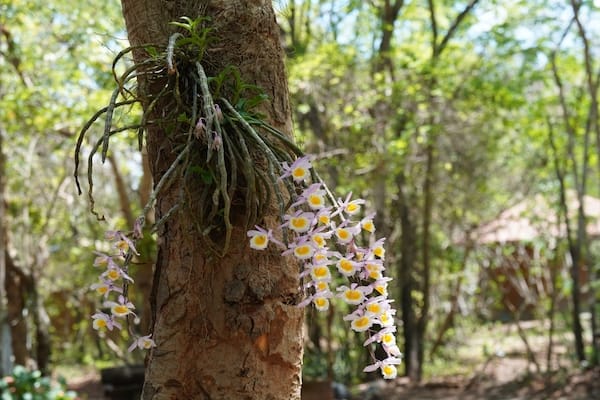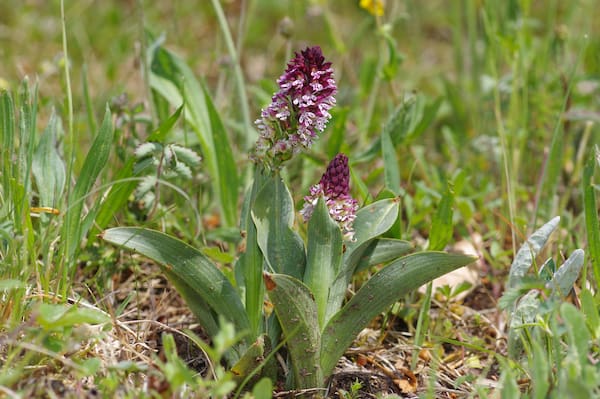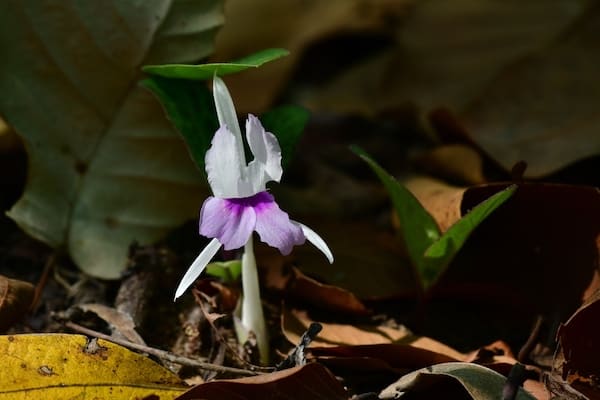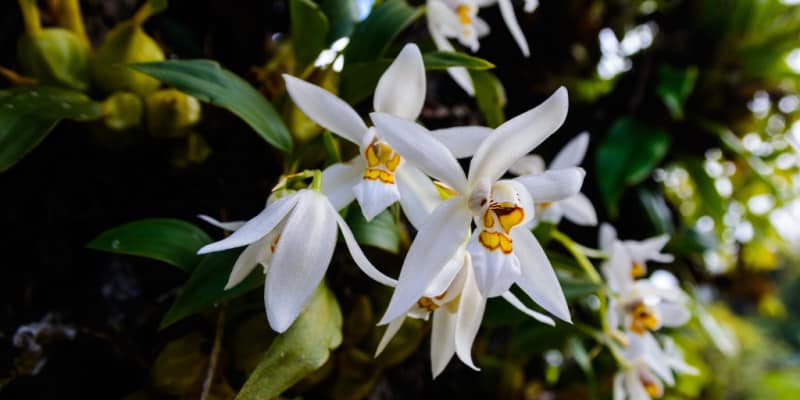
Are orchids epiphytes? (Live off the ground on other plants)
Our site is reader supported, this means we may earn a small commission from Amazon and other affiliates when you buy through links on our site.
What are Epiphyte orchids?
Most orchids are epiphytes. Epiphytes are plants that grow on other plants but are not parasites, this means they live on other plants, usually trees. The important fact is that they take their nutrients in other ways and not from the host plant. In the case of orchids, they often grow on tree trunks and other plants, and even on rocks, in tropical rain forests. This type of plant is often called or referred to as an air plant, as it doesn’t grow in soil.
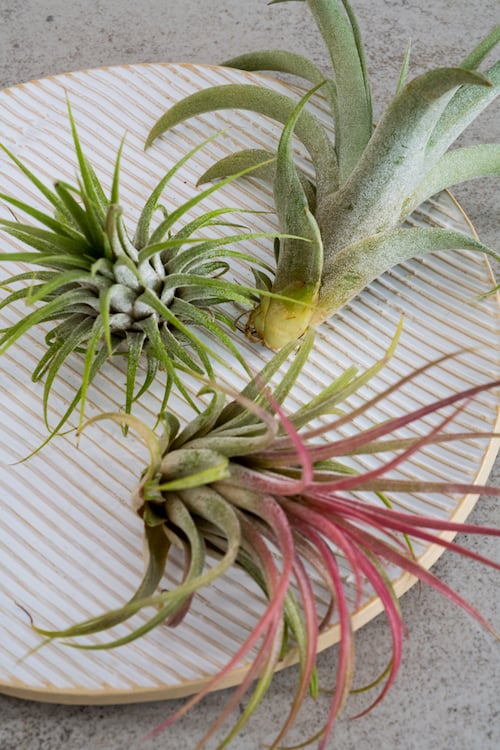
When I think of an air plant, I think of Tillandsia, the sort you see used in a terrarium or attached to a piece of wood and misted occasionally. Orchid epiphytes actually grow in the same way. Its only attachment to the plant it’s growing on is for support; it doesn’t draw any nutrition from it.
Orchids obtain their water from rain and from moisture in the air, taken in mainly through the roots. Their nutrition comes from the minerals in rain and from any debris that collects on the plant supporting the orchid. To mimic this environment, this is why I like to mist them and then feed them with a special fertiliser I add to the spray.
Read next: How and when to water orchids for a longer flowering orchid
In the wild, orchids propagate through the dispersal of their seeds by pollinators. Orchids have small and light seeds that are easily carried away and are also blown in the wind. In a domestic environment, you can propagate an orchid by division, by offshoots and by tissue culture. (See How to propagate an orchid for details.)
Terrestrial orchids that grow on the ground
In contrast, the other main category of orchids is terrestrial. These are orchids that grow along the ground. Some varieties of these have roots that spread into the ground. Terrestrial orchids grow from pseudobulbs, which are pods that contain nutrients and water to keep the plant healthy when things aren’t going so well. New orchids can spring from these pseudobulbs.
Terrestrial orchids aren’t as susceptible to temperature changes as epiphyte orchids. Some of the species actually need a hard frost in the winter to produce blooms the following spring. If you have a variety of these, don’t worry if it loses its leaves in the cold months as it’s deciduous and this is something that often worries people. New leaves appear when the warmer weather arrives.
Although terrestrial orchids may plant their roots in soil, be careful around them. These roots are extremely shallow, and it’s easy to accidentally lift them out of the ground as you’re watering the plant.
You can learn more about the best soil for orchids here as well as how to make it, then I have this guide on how much light orchids need, as this is why they often fail to flower or flower again
